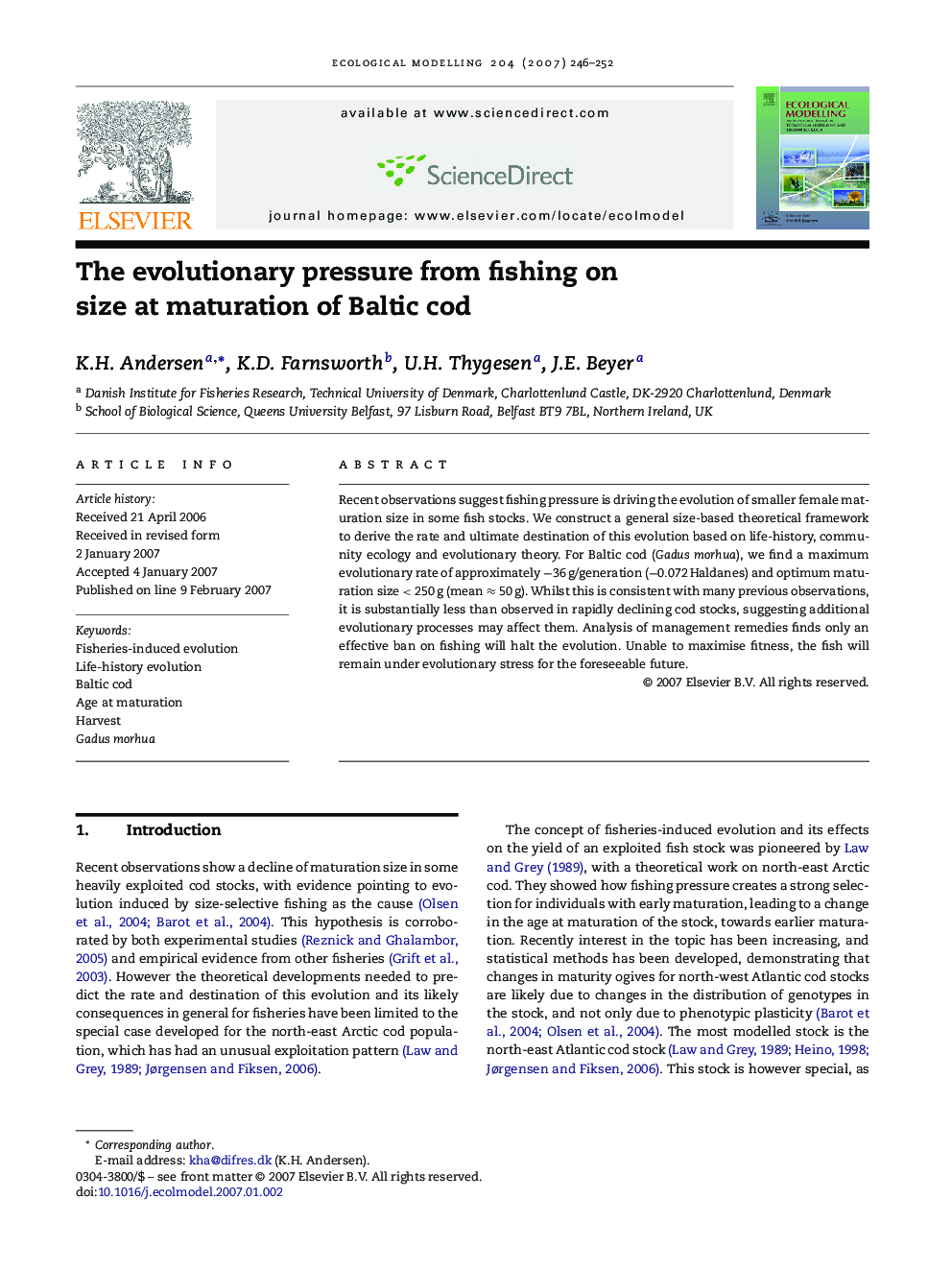| Article ID | Journal | Published Year | Pages | File Type |
|---|---|---|---|---|
| 4378823 | Ecological Modelling | 2007 | 7 Pages |
Abstract
Recent observations suggest fishing pressure is driving the evolution of smaller female maturation size in some fish stocks. We construct a general size-based theoretical framework to derive the rate and ultimate destination of this evolution based on life-history, community ecology and evolutionary theory. For Baltic cod (Gadus morhua), we find a maximum evolutionary rate of approximately â36âg/generation (â0.072âHaldanes) and optimum maturation size <250âg (meanâ50âg). Whilst this is consistent with many previous observations, it is substantially less than observed in rapidly declining cod stocks, suggesting additional evolutionary processes may affect them. Analysis of management remedies finds only an effective ban on fishing will halt the evolution. Unable to maximise fitness, the fish will remain under evolutionary stress for the foreseeable future.
Related Topics
Life Sciences
Agricultural and Biological Sciences
Ecology, Evolution, Behavior and Systematics
Authors
K.H. Andersen, K.D. Farnsworth, U.H. Thygesen, J.E. Beyer,
